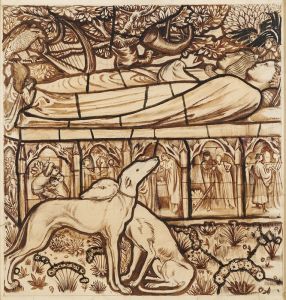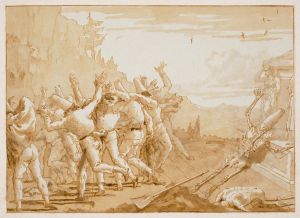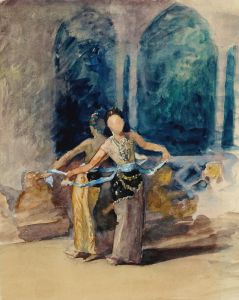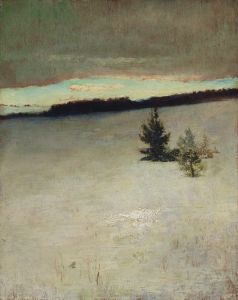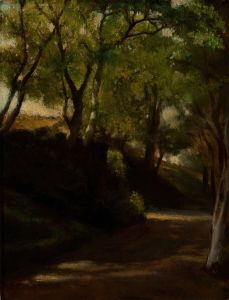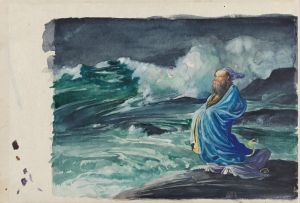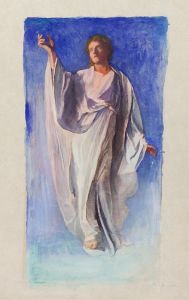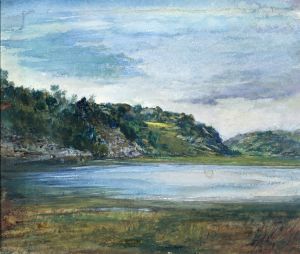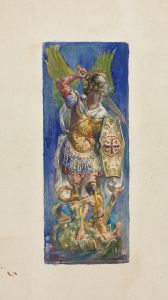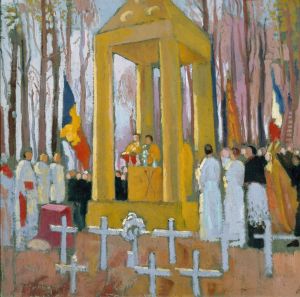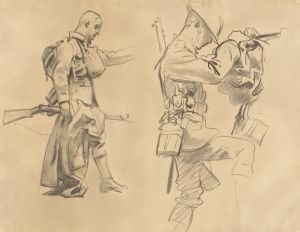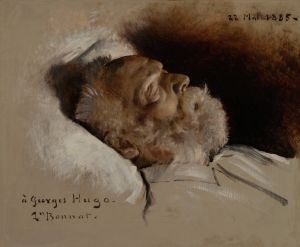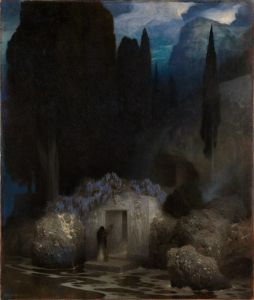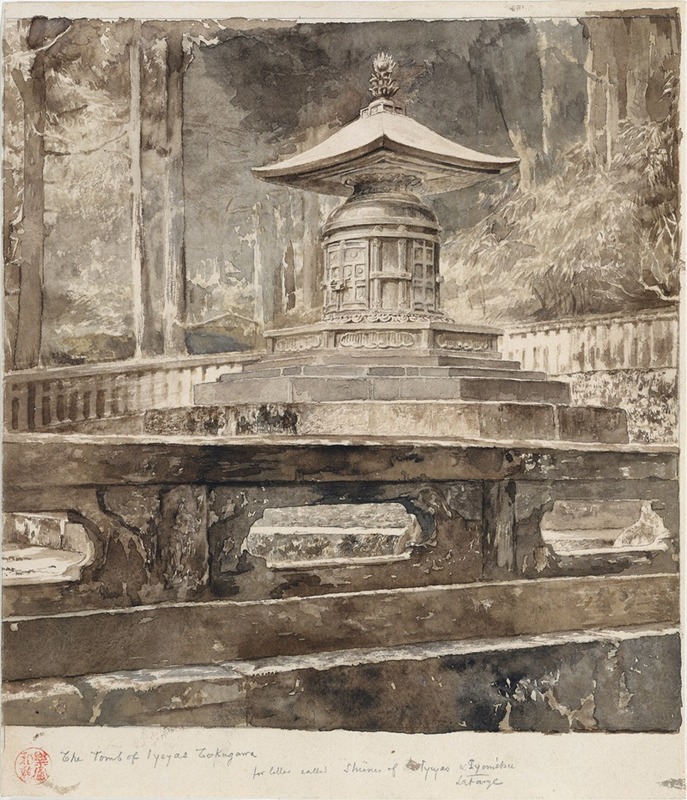
The Tomb of Iyeyasu Tokugawa
A hand-painted replica of John La Farge’s masterpiece The Tomb of Iyeyasu Tokugawa, meticulously crafted by professional artists to capture the true essence of the original. Each piece is created with museum-quality canvas and rare mineral pigments, carefully painted by experienced artists with delicate brushstrokes and rich, layered colors to perfectly recreate the texture of the original artwork. Unlike machine-printed reproductions, this hand-painted version brings the painting to life, infused with the artist’s emotions and skill in every stroke. Whether for personal collection or home decoration, it instantly elevates the artistic atmosphere of any space.
John La Farge was an American artist known for his work in stained glass, painting, and illustration. One of his notable works is "The Tomb of Iyeyasu Tokugawa," which reflects his interest in Japanese culture and art. La Farge was part of a movement in the late 19th century where Western artists were increasingly influenced by Japanese aesthetics, a trend known as Japonisme.
"The Tomb of Iyeyasu Tokugawa" is a watercolor painting created by La Farge during his travels in Japan. The painting depicts the mausoleum of Tokugawa Ieyasu, the founder of the Tokugawa shogunate, which ruled Japan from 1603 until the Meiji Restoration in 1868. Ieyasu's tomb is located in Nikkō, a city known for its historic and cultural significance, particularly the Nikkō Tōshō-gū shrine, where the tomb is situated.
La Farge's painting captures the serene and intricate beauty of the site, highlighting the architectural details and the surrounding natural environment. His use of color and light in the watercolor medium reflects his mastery in capturing the essence of the location. The painting is noted for its attention to detail and the way it conveys the spiritual and historical significance of the tomb.
La Farge's journey to Japan was part of a larger trip to Asia and the South Pacific, which he undertook with his friend and fellow artist Henry Adams in 1886. This trip had a profound impact on La Farge's work, as he was deeply inspired by the cultures and landscapes he encountered. His experiences in Japan, in particular, influenced his artistic style and subject matter, leading to a series of works that incorporated Japanese themes and techniques.
The painting of Iyeyasu's tomb is an example of La Farge's ability to blend Western and Eastern artistic traditions. His work often featured a synthesis of different cultural elements, reflecting his interest in cross-cultural exchange and understanding. La Farge's contributions to art extended beyond painting; he was also a writer and a critic, and he played a significant role in promoting the appreciation of Japanese art in the United States.
Today, John La Farge is remembered as a pioneer in American art, particularly for his innovative use of color and his role in introducing Japanese aesthetics to Western audiences. His painting "The Tomb of Iyeyasu Tokugawa" remains a testament to his artistic vision and his ability to capture the beauty and complexity of different cultures. The work is a valuable piece of art history, illustrating the impact of cultural exchange on artistic development during the late 19th century.





